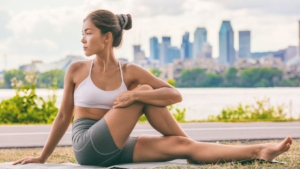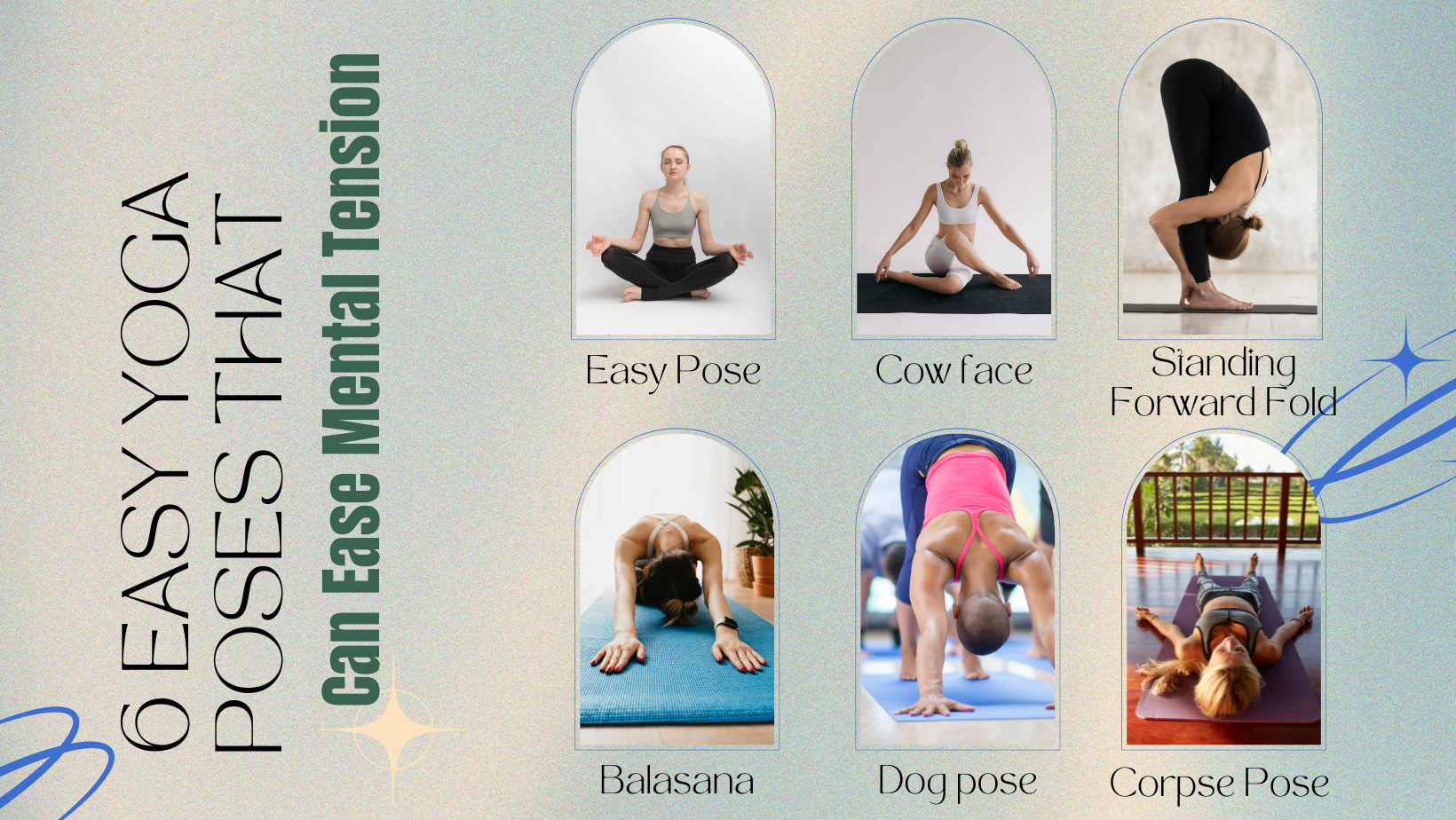
Are you feeling too much of the same old grind? Do you feel tense all the time because you have so many worries? All of us occasionally experience mental tension that leaves us feeling tense, nervous, and exhausted. But do not worry! Yoga provides a potent tool to help overcome negative emotions and foster inner tranquility. You can feel happier, feel less stressed, and feel more grounded and centered after even a brief, mild yoga exercise.
The allure of yoga lies in its accessibility to all. To benefit from it, you don’t need any expensive gear or prior experience. Here are six simple yoga poses you can do at home to release tension in your mind and promote calmness:
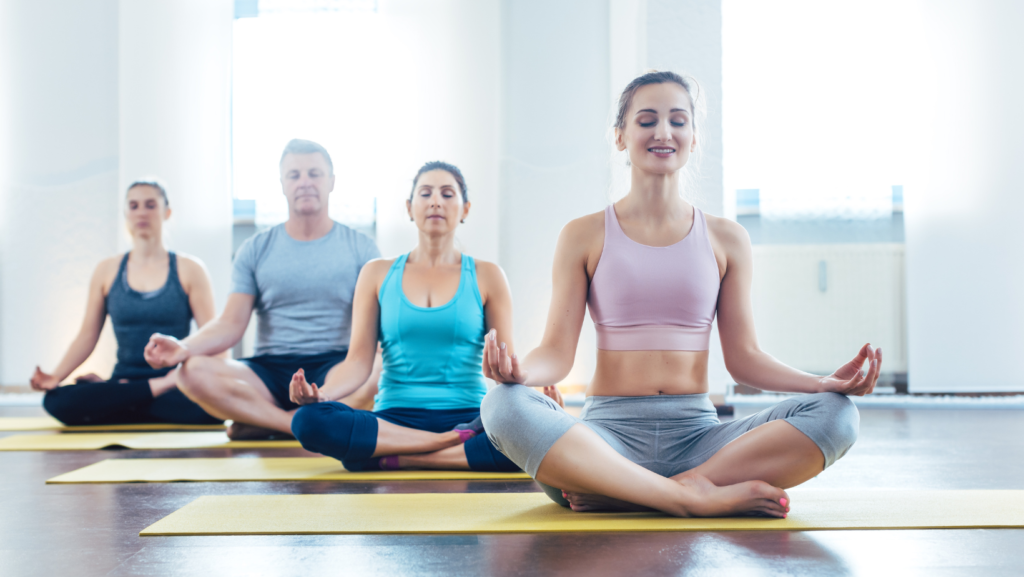
Easy Pose (Sukhasana): A excellent method to start your practice and calm your thoughts is to start with this basic seated pose. With your back straight and your legs crossed, take a comfortable seat on the floor. You can sit on a folded blanket or pillow for support if crossing your legs hurts. With your palms facing down, place your hands on your knees. Shut your eyes and pay attention to your breathing. Breathe slowly and deeply, using your mouth to exhale and your nose to inhale. With every breath, feel your tummy rise and fall. Imagine taking in soothing energy as you inhale, and as you exhale, picture letting go of any stress or anxiety.

Balasana, also known as Child’s Pose, is a reviving pose that is ideal for relieving tension in the body and mind. Place your toes together while kneeling on the ground, then recline on your heels. Place your hands in front of you, palms down, and rest your forehead on the ground. You can place your arms alongside your body if reaching forward with them hurts. Take slow breaths and let your body come to rest. As you go further into the position, see your anxieties dissolving like snow.

The Cat-Cow Pose (Marjaryasana-Bitilasana) is a somewhat flowing posture that can aid with circulation, back pain, and massage the spine—a major source of stress. With your legs hip-width apart and your wrists shoulder-width apart, begin on your hands and knees. Feel your spine stretch and your chest open as you breathe in and arch your back and look up (cow position). Using your core muscles, round your back and bring your chin to your chest in a cat stance as you release the breath. Breathe in and out of each of these motions to maintain a steady, rhythmic tempo.
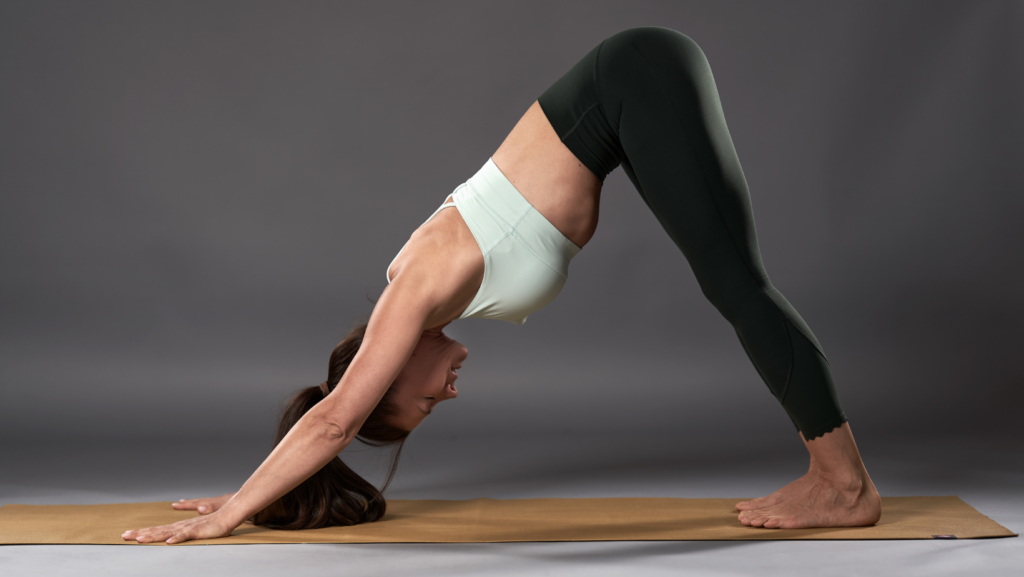
Adho Mukha Svanasana, or downward-facing dog, is a reviving position that helps to promote circulation, revitalize the body, and increase blood flow. As you begin on your hands and knees, extend your legs as far as you can and drive your hips back and upward toward the ceiling. Lengthen your neck and keep your heels flat on the floor (or pressed down toward the mat). You can slightly bend your knees if your hamstrings are tight. The secret is to establish a comfortable posture that allows you to extend your back. Hold for a few breaths, paying attention to your body’s feelings and your breathing.
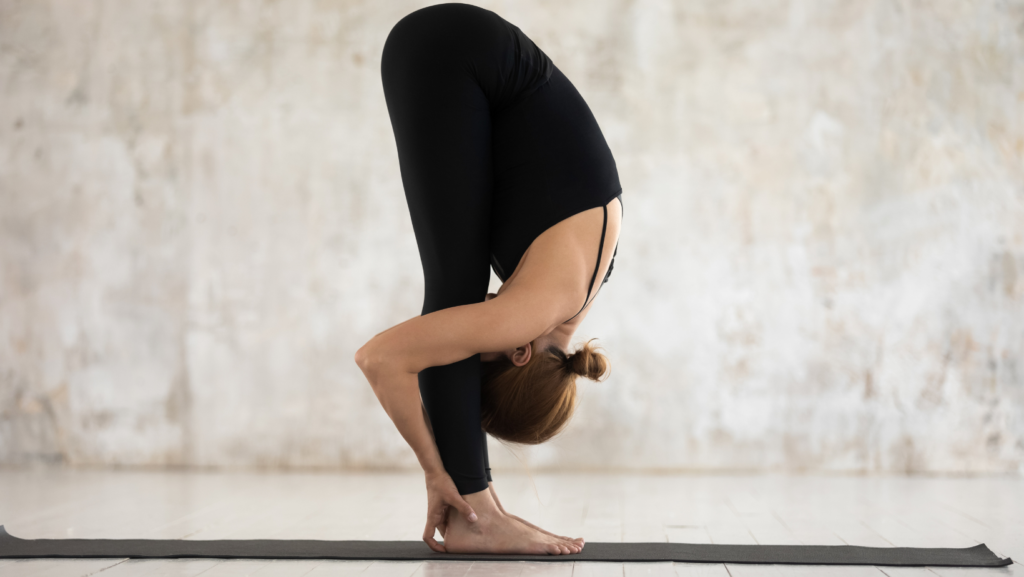
Standing Forward Fold (Uttanasana): This balancing position improves circulation, eases mental tension, and stretches the hamstrings softly. Place your hands on your shins or the floor while standing with your feet hip-width apart. Hinge forward from your hips. Take long breaths and let your head hang heavily. Don’t push yourself to get to the floor if you can’t do it comfortably. You can brace your hands with a yoga block or slightly bend your knees. With every exhale, let your body naturally fold forward.
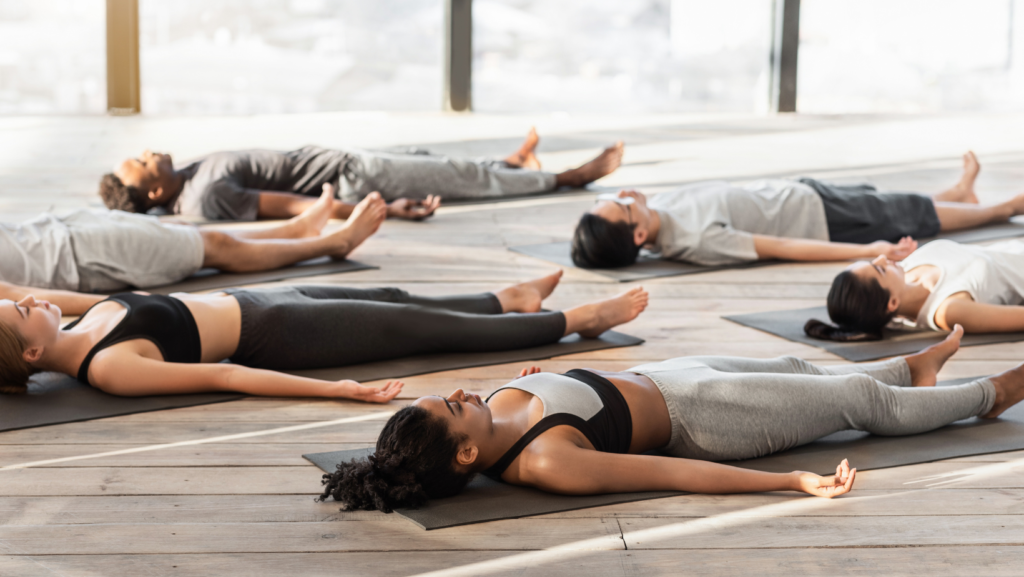
Corpse Pose (Savasana): This last pose enables total relaxation and integration of your practice’s advantages. With your arms at your sides and your palms facing up, lie flat on your back. Shut your eyes and pay attention to your breathing. Just be in the present moment and let any tension dissolve away.
Take note of your body’s sensations and the rise and fall of your breathing. Savor this sensation of inner serenity and profound relaxation.
Recall to pay attention to your body and adjust these poses as necessary. A yoga practice has no right or wrong way to execute it. Finding inner calm and paying attention to your breathing is the most crucial thing to do. For a few breaths, or for as long as seems comfortable, hold each pose. To assist you stay concentrated during your practice, you may even set a timer.
Expanding Your Practice:
Once you gain greater ease in these positions, you can progressively extend your practice and experiment with different yoga poses. To learn more about yoga, there are a plethora of online and offline tools at your disposal. Another option is to enroll in a yoga class taught by a certified teacher, who can offer you individualized assistance and advice.
Yoga has several advantages that go far beyond just relieving stress. A regular yoga practice has been shown to improve physical and emotional well-being in the following ways:
Physical Benefits: Enhanced Range of Motion and Flexibility: Yoga poses lengthen and stretch your muscles, tendons, and ligaments, enhancing your range of motion and general flexibility. This can lessen your chance of injury, increase your athletic performance, and facilitate more pleasant daily motions.
Increased Muscle Tone and Strength: A lot of yoga poses work several different muscle groups, which contribute to increased tone and strength. This may result in stronger core muscles, better posture, and enhanced balance.
Improved Cardiovascular Health: Although certain yoga poses are gentle, others can raise your heart rate and strengthen your heart. This may result in a stronger heart, reduced blood pressure, and more endurance.
Enhanced Respiratory Function: The practice of yoga places a strong emphasis on deep, deliberate breathing, which can enhance oxygen intake and lung function. This may result in more vitality, restful sleep, and a calmer mood.
Advantages for the Mind and Emotion:
Decreased Stress and Anxiety: Research has demonstrated that yoga’s blend of physical postures, breathing techniques, and meditation is highly beneficial in lowering stress and anxiety. Slow, deliberate movements combined with an awareness of the present moment can help calm the mind and encourage relaxation.
Enhanced Mood and General Well-Being: Engaging in yoga poses a number of benefits for your general mood and well-being. Engaging in physical activity, practicing mindfulness, and relaxation techniques can all help to improve your energy levels, sleep quality, and overall happiness and contentment.
Enhanced Self-Awareness and Body Positivity: Yoga trains your attention to be aware of the motions and sensations in your body. A stronger sense of self-awareness and body positivity may result from this. You will have an appreciation for the special skills and limitations of your body.
Increased Focus and Concentration: The mindfulness and breath control practices of yoga can aid in enhancing your focus and concentration. This can help you in every area of your life, including your interactions with others and at work and school.
Yoga is a complete practice with many physical and mental health advantages. Try yoga if you’re seeking for a way to enhance both your physical and mental well-being. The extent of its potential benefits may surprise you.

